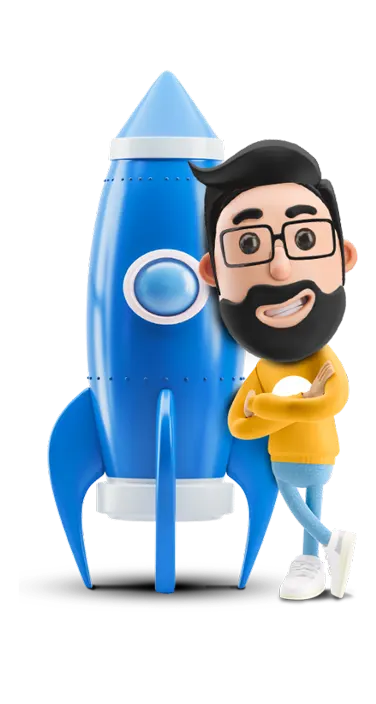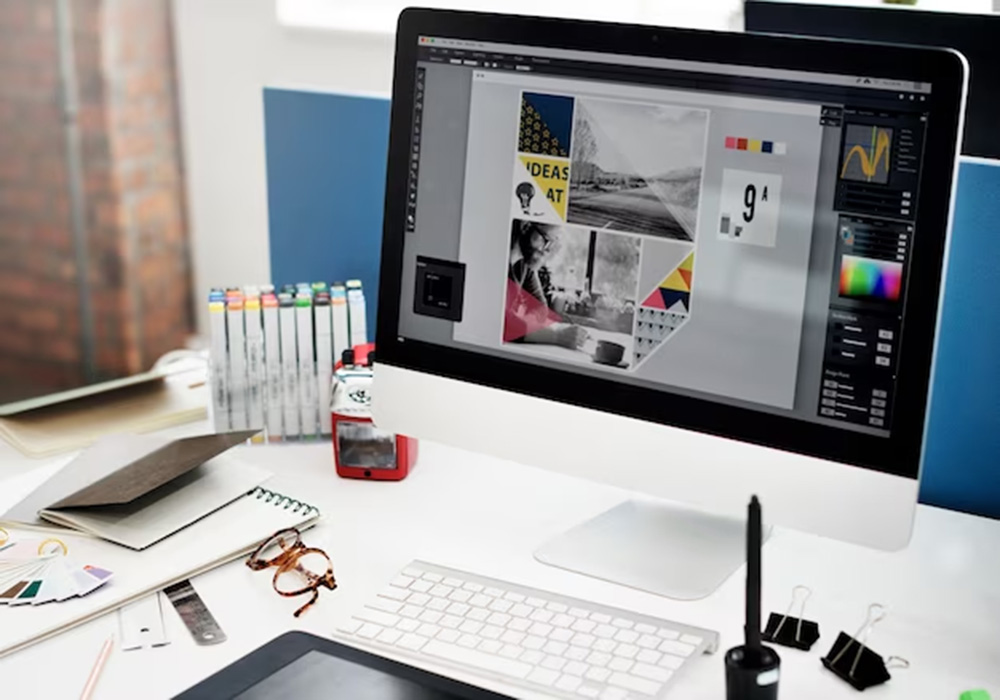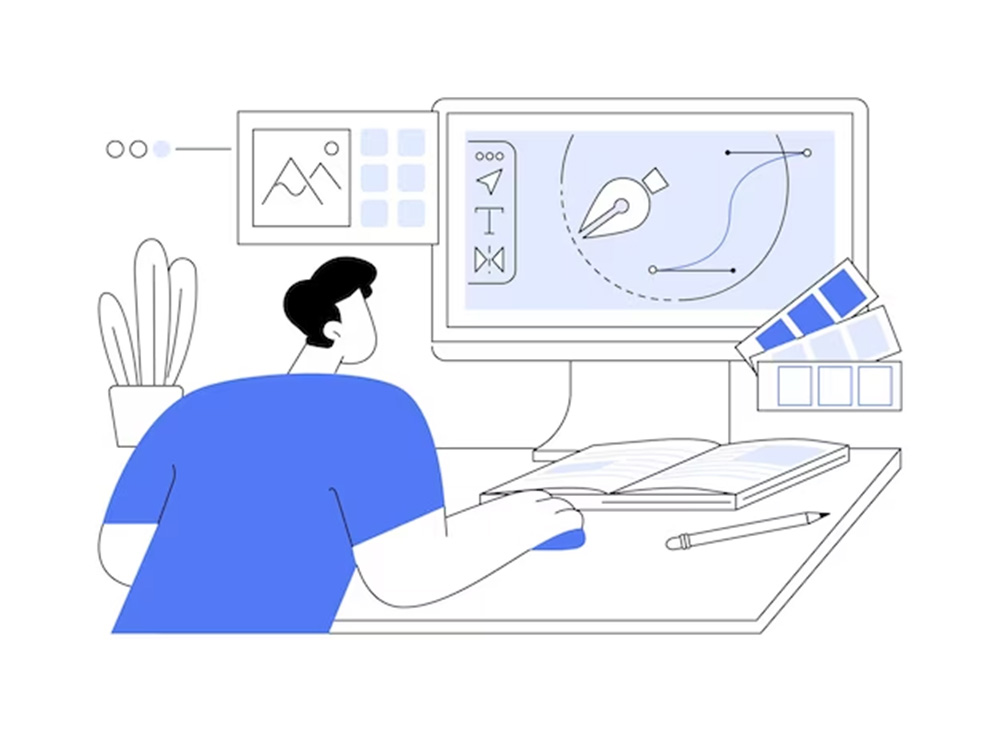
Launching Soon
Join our VIP list to receive early access and a LIFE-TIME discount on your Graphic
Design subscription.



Image: Freepik
They say money doesn't buy happiness, but in the world of an Australian graphic designer, it unlocks a crucial door: freedom. The freedom to explore creative avenues, invest in professional development and chase the inspiration that fuels their passion.
This isn't just about the bottom line; it's a journey through their hopes, struggles, and the clever ways they navigate the financial landscape. From meticulous budgeting to strategic side hustles, these designers demonstrate the resourcefulness and resilience that are hallmarks of their creative spirit.
So, join us as we delve into a typical financial week of a graphic designer – a window into the world where passion meets practicality and every design project is a step towards a freer, more fulfilling future.
The average income of an Australian Graphic Designer
Earning around $80,000 a year (as of January 2024), your Aussie graphic designer neighbour is likely juggling a creative passion with the realities of everyday life.
This average salary might sound like a decent chunk of change, but it's important to remember that it's just a starting point, and the actual pay can vary depending on their experience, the kind of design they do and even where they live in Australia.
Experience: As with any career path, experience significantly impacts income. Junior designers with less than a year of experience can expect a lower starting salary, while seasoned professionals with extensive experience command significantly higher figures.
Skillset: Specialisation in specific areas like web design, motion graphics, or user experience (UX) design often leads to higher salaries compared to general graphic design roles.
Location: Salaries can vary depending on the city or region. Major metropolitan areas like Sydney and Melbourne tend to offer higher salaries compared to regional areas, due to factors like a higher cost of living.
Career tracks and salary
 The career progression for a graphic designer can be a laborious but fulfilling one. Image: Freepik
The career progression for a graphic designer can be a laborious but fulfilling one. Image: Freepik
Progression: The journey of an Australian graphic designer typically starts with entry-level positions like junior graphic designer (average salary: $49,476) or graphic design assistant.
As they gain experience and hone their skills, they can progress to mid-level roles like graphic designer (average salary: $55,442) and web designer.
Further down the line, designers can aim for senior positions like senior graphic designer (average salary: $96,985) or creative director (average salary: $165,066).
These roles involve leadership, strategic planning, and managing design teams, leading to a significant increase in earnings potential.
The general monthly expenses of an Australian graphic designer
So you've always admired the work of graphic designers and their ability to turn ideas into visually stunning realities.
But have you ever wondered what it's actually like to be one? Beyond the trendy office spaces and free kombucha, lies a world of, well, adulting: managing finances, juggling expenses, and making that sweet design salary stretch.
Let's get real and delve into the monthly expenses that typically fill the financial palette of an Aussie graphic designer:
The essential layers and the foundation of a designer’s life
Rent: This is the big kahuna, the cost that can make or break your budget. Depending on where you choose to set up your design nest (think trendy inner-city apartment or a sun-drenched beachside haven), your rent can vary significantly. Remember, location, location, location!
Median apartment rent costs in Australia’s major cities
|
City |
Median Rent Cost for Apartment |
|
Sydney |
AUD 680 |
|
Melbourne |
AUD 520 |
|
Brisbane |
AUD 560 |
|
Adelaide |
AUD 460 |
|
Perth |
AUD 550 |
|
Hobart |
AUD 552 |
|
Darwin |
AUD 594 |
|
Canberra |
AUD 560 |
A breakdown of apartment rent costs in Australia Image: www.mozo.com
Utilities: Keeping the lights on, the water flowing and the Wi-Fi blazing are essential for any designer. But be mindful that these seemingly small costs can add up quickly, so keep an eye on your usage and shop around for the best deals.
Food and groceries: Fuelling your creative fire requires a healthy dose of good food. Grocery bills can fluctuate depending on your culinary skills (think meal-prepping master versus takeout enthusiast) and dietary needs.
However, based on various sources like Finder, Canstar Blue, and the Australian Bureau of Statistics (ABS), here's a general estimate of the average cost of food and groceries in Australia:
It's important to note that these are just averages, and your actual spending may deviate based on the individual factors mentioned earlier. If you're looking for a more personalised estimate, consider factors like your location, dietary needs and shopping habits.
Transportation considerations
Whether you're a dedicated cyclist navigating the city streets or a public transport pro, getting around adds to your monthly expenses. Factor in fuel costs and car maintenance if you're a four-wheeled kind of designer.
Average weekly spending: Based on data from the Australian Automobile Association (AAA) in December 2023, the average Australian household spends around $384.86 per week on transport.
Now let’s look at the breakdown of costs…
This figure encompasses various transportation expenses:
Car ownership: Loan repayments, fuel, insurance, registration, servicing and tolls are all factored in.
Public transport: Fares for buses, trains, trams and ferries contribute to the overall cost.
Other expenses: This could include bicycle maintenance, ride-sharing services or car rentals for occasional use.
Location matters, as transport costs can vary significantly depending on your location.
Major cities: Sydney, Melbourne, Brisbane tend to have higher overall costs due to factors like higher fuel prices, public transport fares, and potential tolls.
Regional areas: Public transport options may be limited, but car ownership costs can be lower due to cheaper fuel and potentially shorter commuting distances.
Beyond location, your personal choices also influence transportation expenses:
Commuting habits: The distance you travel to work and your chosen mode of transport (private car vs public transport) significantly impact the costs.
Fuel efficiency: The type of car you drive and its fuel efficiency can make a big difference in how much you spend on gas.
Public transport usage: The frequency of using buses, trains, etc. directly affects your overall transport expenditure.
Additional considerations to consider
Parking fees: Finding parking in major cities can add to the overall cost, especially in popular areas or during peak hours.
Tolls: Utilising toll roads can be a time-saver but adds to the overall transport expense.
Costs to invest in and hone your craft
 Continuous learning is part and parcel of a graphic designer’s life. Image: Freepik
Continuous learning is part and parcel of a graphic designer’s life. Image: Freepik
Software and subscriptions: Design software like Adobe Creative Suite is your bread and butter, so subscriptions become an essential (and potentially pricey) part of the picture.
Learning and development: Staying ahead of the curve is crucial in the ever-evolving design world. Online courses, workshops or conferences can help you hone your skills and stay on top of the latest trends. Remember, this investment in yourself can pay off in the long run!
Networking and community: Building connections with other creatives is a fantastic way to learn, grow, and even land new gigs. Membership fees for industry associations or attending networking events can contribute to your monthly expenses, but the potential benefits are worth considering.
Beyond work, adding colour to life outside of design
 All work and no play makes anyone a dull person! Image: Freepik
All work and no play makes anyone a dull person! Image: Freepik
Entertainment: Whether it's catching the latest blockbuster, jamming to live music, or exploring hidden art galleries, everyone needs a little downtime. The amount you spend on entertainment depends on your personal preferences and how often you indulge.
Fitness and wellbeing: Taking care of your physical and mental health is vital for any creative professional. Gym memberships, yoga classes, or simply hitting the park for a run all contribute to your monthly well-being expenses.
Personal care and clothing: Looking sharp and feeling confident is important, and that includes taking care of yourself with necessities like clothing, toiletries and personal care items. Remember, comfort and functionality are key for those long design sessions!
Planning for the future
Superannuation: Contributing to your super is a must in Australia, ensuring you have a nest egg for your golden years. This compulsory contribution is deducted from your salary, impacting your monthly take-home pay.
Debt repayment: Student loans, car payments, or other existing debts can be a significant monthly expense. It's crucial to factor these in and create a budget that allows you to manage your debt responsibly.
Remember, this is just a general overview. Every designer's financial journey is unique, and influenced by factors like location, lifestyle choices and career stage.
But what does it mean for employers or people looking to hire a graphic designer?
While hiring an in-house graphic designer can be beneficial, it's crucial to consider the full financial picture. Beyond the salary, Australian designers face significant living costs, impacting your bottom line.
High rent: Major cities like Sydney and Melbourne come with significant rent costs, impacting your overall employee expense.
Software subscriptions: Essential design software subscriptions add to the monthly cost of an in-house designer.
Benefits and superannuation: As an employer, you're responsible for superannuation contributions and potential benefits, further increasing the cost.
Side note: if you’re looking for a design partner without the financial complexities of an in-house designer. Contact us today for a free 15-minute Demo Call and see how we can help your business thrive!
Conclusion
As you've seen, a day in the life of an Australian graphic designer is a delicate dance between pursuing creative passions and navigating financial realities. While the income allows for a fulfilling life, factors like rent, software subscriptions and career development expenses can add up quickly.
For designers seeking more flexibility and freedom in managing their workload and income, platforms like Brandripe offer an alternative. Brandripe connects talented designers with businesses seeking creative solutions, providing a streamlined platform and flexible engagement models.
This allows designers to work on their own terms, manage their time effectively, and access a wider range of projects, potentially leading to a more sustainable and fulfilling creative career.
Ready to explore the possibilities? Send your CV to [email protected]!

